How to make a simple buck controller?
In many applications today, the rated input voltage required exceeds the VIN maximum rating of many existing DC / DC controllers. In this regard, traditional solutions include the use of expensive front-end protection or implementation of low-side gate drive devices. This means using an isolated topology, such as a flyback converter. Isolated topologies usually require custom magnetism, and design complexity and cost have increased compared to non-isolated methods.
There is another solution that can be solved by using a simple buck controller with VIN max (maximum input voltage) less than the system input voltage. How is this achieved?
The buck controller is usually derived from a reference potential (0V) bias power supply (Figure 1a). The bias supply comes from the input voltage; therefore, the device needs to withstand the full VIN potential. However, because the gate drive voltage required to turn on the P-channel metal oxide semiconductor field effect transistor (MOSFET) is lower than VIN at VGS, the P-channel buck controller has a gate drive power supply that references VIN (Figure 1b). Turning off the P-channel MOSFET simply changes the gate voltage to VIN (0V VGS) (Figure 2).
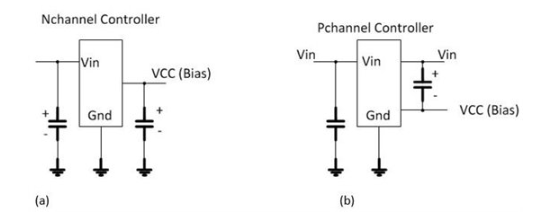
Figure 1: VCC bias generation for N-channel (a); and P-channel controller (b)
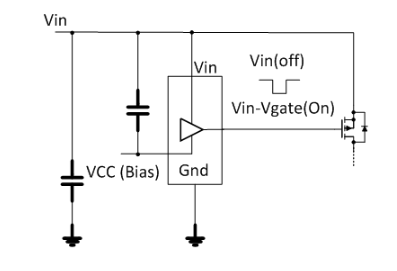
Figure 2: Gate drive of the P-channel controller
The asynchronous P-channel controller derives its bias power to drive the P-channel gate, which can bring huge benefits and may provide a virtual ground that is suspended above the 0V potential. For N-channel high-side MOSFETs, the voltage comes from a grounded reference supply. This is the charge pumped using a boost capacitor and diode to provide a gate voltage that is higher than the source potential of VIN. Using P-channel high-side MOSFETs can significantly simplify this problem. To turn on the P-channel MOSFET, the gate potential needs to be lower than the source potential of VIN. Therefore, the power supply only references VIN, not the VIN and ground mentioned above.
Floating ground
How to create a floating ground for the controller? This is very simple and can be achieved by using an emitter follower. Figure 3 shows the basic practice of this scheme. The potential of the PNP emitter is Vbe (~ 0.7V), which is lower than the voltage potential of the Zener diode (Vz). In essence, you can float the controller to VIN and adjust the reference value of the controller to limit the voltage between VIN and device ground.
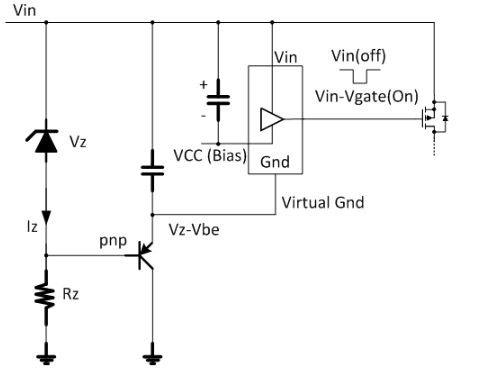
Figure 3: Using a simple emitter tracker scheme to create a virtual ground Output voltage conversion
There is a challenge to overcome here. Since the controller is located at virtual ground (Vz-Vbe) and generates a step-down output voltage with reference to ground (0V) potential, how can the output voltage signal be converted to a feedback voltage above virtual ground (typically between 0.8V and 1.25 Between V)? Figure 4 illustrates the specific challenges.
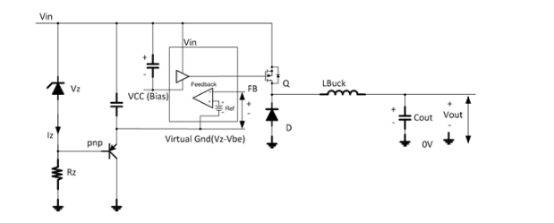
Figure 4: A schematic diagram showing the voltage potential difference between VOUT (reference 0V ground) and the controller's feedback voltage (reference virtual ground)
To close the loop, you can use a pair of paired transistors to practice the circuit shown in Figure 5. One matching pair sends the feedback signal to VIN; the other matching pair generates a current from VIN to a potential above virtual ground.
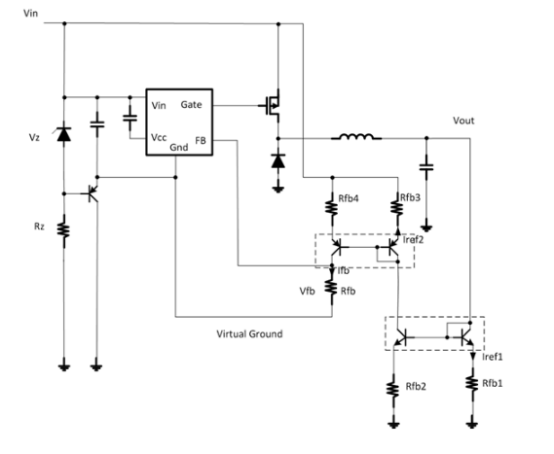
Figure 5: High-level schematic of asynchronous controller and feed practice using paired transistors
In summary
The LM5085 is ideal for the application I described because it is a P-channel asynchronous controller whose VCC bias supply is referenced to VIN. In traditional applications, the LM5085 can withstand input voltages up to 75VIN. For applications where the input transient voltage is much higher than 75V, please consider the solution presented here, the output is 12V.
Starting from the controller's feedback voltage of 1.25V, use current to set the feedback (Ifb) to 1mA, and use Equation 1 to calculate the Rfb value:

In the formula, Rfb = 1.25k.
Rfb1 sets the reference current of the current mirror. Using 1mA as the reference current again, and using Equation 2, calculate Rfb1 to set the output voltage:

In the formula, VOUT = 12V, Rfb1 = 11.3k, and Vbe is ~ 0.7V.
When 1mA flows into Rfb2 and the emitter current is approximately equal to the collector current (Ie ~ Ic), the reference current Iref2 is set. The loop is closed and the voltage will be adjusted to the set voltage.
Output voltage regulation
This idea is suitable when the transient voltage is significantly higher than the absolute maximum of the LM5085. The LM5085 is a constant on-time (COT) controller; therefore, its on-time (Ton) is inversely proportional to VIN. However, when clamping VIN to the LM5085, Ton will no longer adjust as VIN (to power stage) increases because the device will have a fixed voltage set by the Zener diode, and VIN (to power stage) will continue Increase. This will result in a decrease in frequency, because the increase in the input voltage of the power stage exceeds the clamping voltage of the LM5085; therefore, the regulation voltage may begin to increase slightly. Therefore, to ensure the Type 1 ripple injection standard, the magnitude of the ripple injection voltage is specified. Ultimately, ensure that the ripple is set within an acceptable range to maintain stability and minimize output error as the ripple increases.
Example schematic
Figure 6 shows a schematic diagram of a 48V power supply with an absolute maximum VIN rating of 150V. The example can provide 12VOUT under 3A conditions.
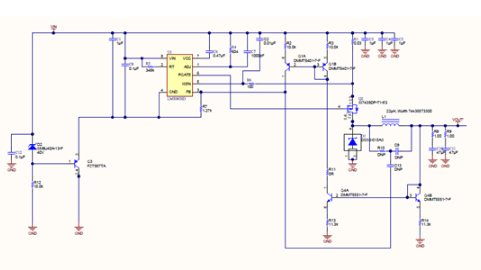
Figure 6: 24V to 150VIN (maximum) / 12VOUT when using the LM5085 in a 3A design
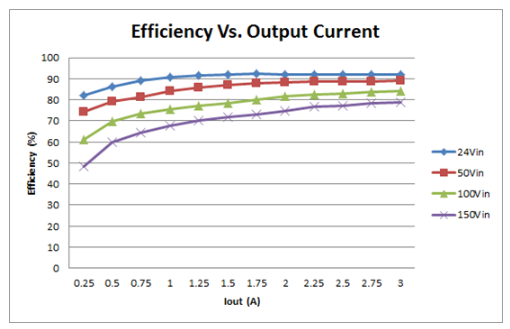
Figure 7: Relationship between efficiency (%) and load current (A) at different input voltages
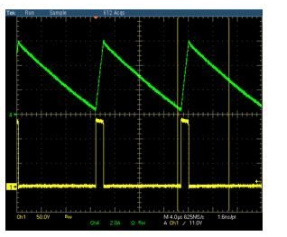
Figure 8: Channel 1 switching node voltage, channel 4 inductor ripple current
In conclusion
You can use the P-channel asynchronous buck controller in applications where the system input voltage is higher than the maximum input voltage rating of the device. The advantage of this application is that it uses a lower cost controller and minimizes the number of components.
If you want to know more, our website has product specifications for controller, you can go to ALLICDATA ELECTRONICS LIMITED to get more information

